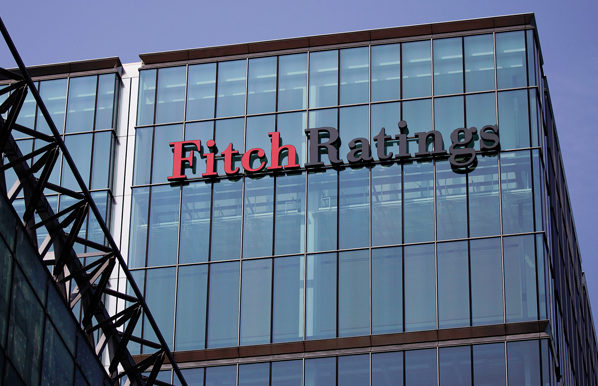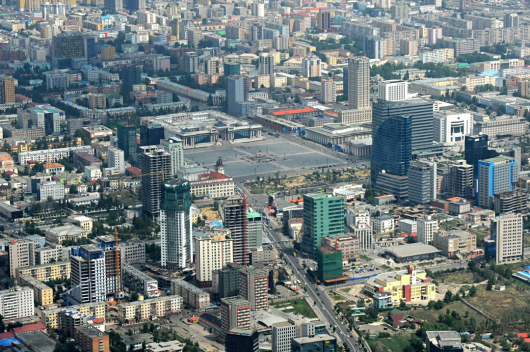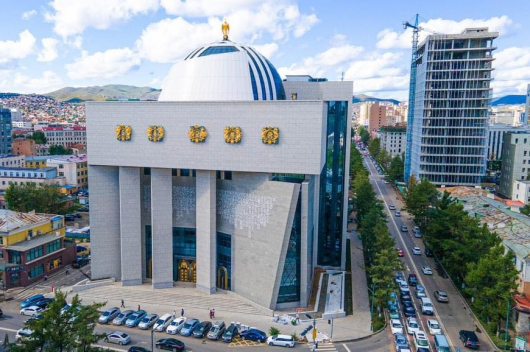Fitch Ratings has upgraded Mongolia’s Long-Term Foreign-Currency Issuer Default Rating (IDR) to ‘B+’ from ‘B’. The Outlook is Stable.
A full list of rating actions is at the end of this rating action commentary.
KEY RATING DRIVERS
Buffers Rebuilt Amid Mining Boom: The upgrade to ‘B+’ and Stable Outlook reflect reductions in Mongolia’s public and external debt burdens, driven by continued strong performance of the country’s mining sector, both well in excess of Fitch’ s previous forecasts. Larger foreign exchange reserves, lower debt and more manageable external debt maturities have strengthened Mongolia’s ability to withstand shocks, such as a correction in commodity markets, although the country remains highly vulnerable to external conditions, in Fitch’s view. Policy uncertainty has declined after the June elections.
Mining-Led Growth: We forecast real GDP growth to average about 6% in 2024-2026, above the projected ‘B’ category median of about 4%, driven by continued expansion of coal and copper mining, as well as solid non-mining activity. Strong coal exports reflect regional demand from China, supported by improving transport links. The strategic Oyu Tolgoi copper mine’s underground phase, which started production in March 2023, is set to see higher volumes from 2025. Expansionary policies are bolstering domestic demand. Other mining and infrastructure projects could support medium-term growth.
Modest Fiscal Deficits: We forecast a balanced government budget in 2024, and a fiscal deficit of 3% of GDP in 2025-2026, from a surplus of nearly 3% of GDP in 2023, as government spending catches up with strong mining revenue. The 2025-2026 deficits will be broadly in line with the projected ‘B’ category median. In August, parliament passed a budget amendment for 2024 (projecting a balanced budget) and the government submitted a draft budget for 2025 (projecting a 1% of GDP surplus).
Rapid Budget Expansion: For 2024, the government expects 26% growth in revenue and a 36% rise in spending, compared with 2023 outturns. For 2025, it anticipates revenue to increase by 20% and spending by 17%, compared to the amended 2024 budget. In our view, the budget assumptions for revenue are optimistic, and our assumptions are lower, but planned increases in capital spending could also prove ambitious. Nevertheless, there is still a possibility that the government could meet its fiscal projections. Monthly data point to an annualised fiscal surplus of about 3% of GDP in 8M24.
Stable Debt; Maturities Contained: We forecast government debt to stabilise at about 44% of GDP from 2024 (projected ‘B’ median: over 50% of GDP), after sharp declines in the past few years. Mongolia’s debt ceiling of 60% of GDP is now specified in nominal instead of present value terms. New rules prioritise concessional funding and mandate the use of surpluses to repay 2% of GDP in debt per year (this still permits positive net borrowing). Just over USD400 million (less than 2% of GDP) in government debt matures in 2025 and about USD1 billion in 2026.
Deposit Buildup: The government has over 10% of GDP in deposits, including about 5% of GDP in the Future Heritage Fund (FHF) and 2% of GDP in the Fiscal Stabilization Fund. Both funds receive a portion of mineral-related revenues, are held at the Bank of Mongolia (BOM) and are partly reflected in its reserves. The government intends to invest the FHF abroad. Under a new sovereign wealth fund law, a portion of transfers previously going into the FHF will, going forward, be channeled into the new Development Fund to finance local projects, but it could take years for it to become operational.
Manageable Current Account Deficit: We expect acceleration of domestic demand to push the current account deficit (CAD) to 6% of GDP (about USD1.3 billion) in 2024 and 7% of GDP in 2025-2026, from a surplus of less than 1% of GDP in 2023 and a deficit of over 13% of GDP in 2022. This is worse than the projected ‘B’ median CAD of less than 3% of GDP but will mostly be covered by FDI. The CAD was just over USD600 million in 7M24.
Stronger Reserves: BOM used the CA surplus in 2023 to rebuild its foreign exchange reserves, which stood at USD4.8 billion as of August 2024 (just over three months of external payments), down from USD5.2 billion in April, but still well above the August 2022 trough of USD2.8 billion. BOM has also been repaying swap liabilities to the People’s Bank of China (PBOC), improving its net foreign assets faster, to USD3.7 billion in July 2024, from USD500 million in August 2022. The PBOC swap was renewed in August 2023 for another three years and a maximum size of RMB15 billion (over USD2 billion).
External Vulnerabilities Remain: Net external debt, at about 130% of GDP at end-2023, is nearly 6x the ‘B’ median, although over 30% of this is FDI, and over 20% is concessional loans, both of which we expect will continue to be stable sources of funding. Foreign reserve coverage ratios, albeit improved, are low given Mongolia’s narrow economic base. Mongolia is among the world’s most commodity-dependent sovereigns, with mineral exports (almost entirely to China) accounting for 90% of external receipts and 30% of government revenue.
Expansionary, Pro-Cyclical Policy Tendencies: We expect the non-mineral primary fiscal deficit to widen to 10% of non-mining gross value added in 2024 and over 13% in 2025, from 7% in 2024. The BOM cut its policy rate by 100bp to 10% in September, despite a recent uptick in inflation (6.4% yoy in August 2024), the government’s inflationary budget, and rapid real private credit growth (over 20% yoy as of July 2024). Nevertheless, we note the BOM also tightened reserve requirements and macroprudential measures, and we still expect inflation to stay within the 8% upper bound of the BOM’s inflation target.
Strong Structural Indicators: Mongolia scores well on World Bank Governance Indicators (WBGIs), and development of the mining sector has resulted in high and rising per capita income relative to ‘B’ category peers. The government led by the Mongolian People’s Party, which won a majority in the June elections but still formed a coalition with the Democratic Party, is likely to deliver broad policy continuity.
ESG – Governance: Mongolia has an ESG Relevance Score of ‘5[+]’ for Political Stability and Rights and ‘5’ for the Rule of Law, Institutional and Regulatory Quality and Control of Corruption. These scores reflect the high weight that the WBGIs have in our proprietary Sovereign Rating Model. Mongolia has a medium WBGI ranking at the 46th percentile.
 3,575.44
3,575.44












Related News